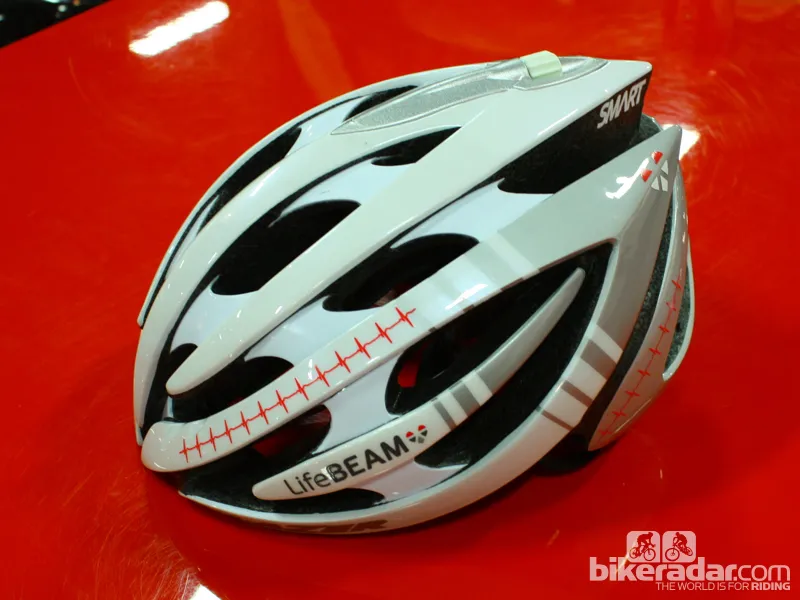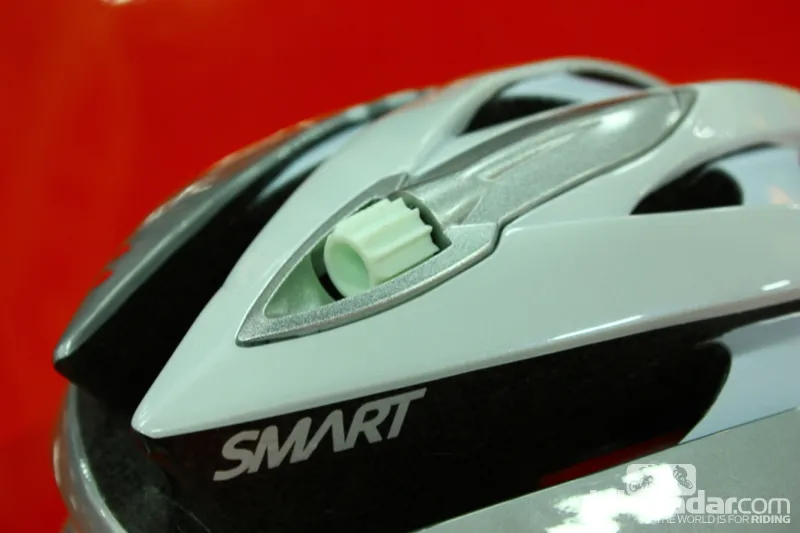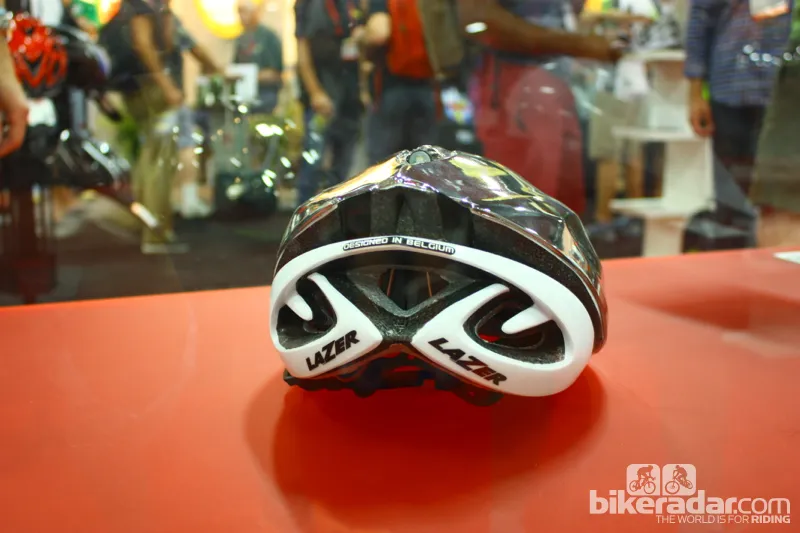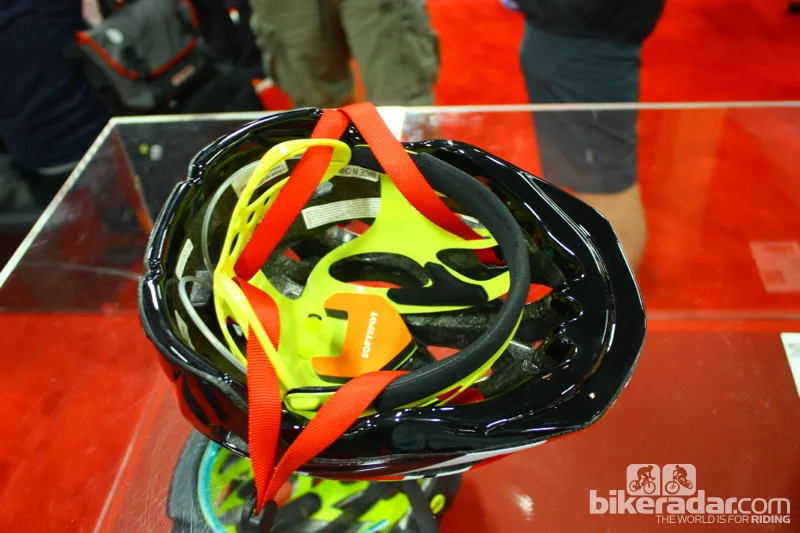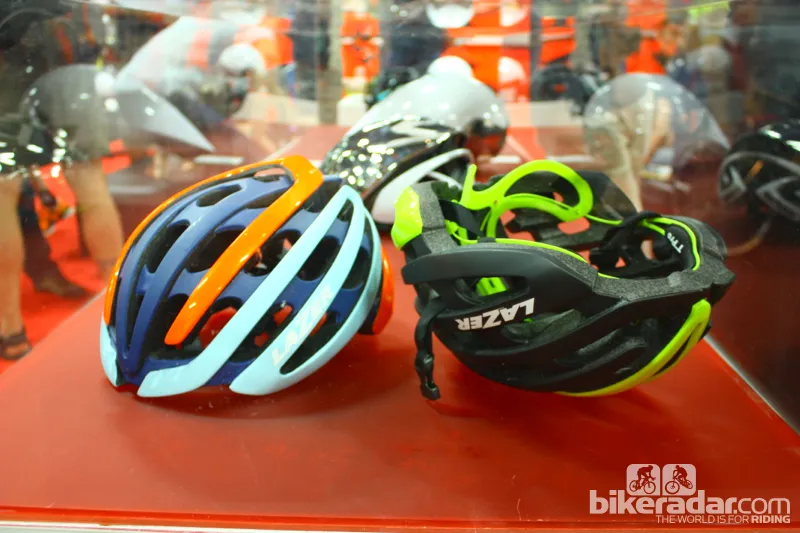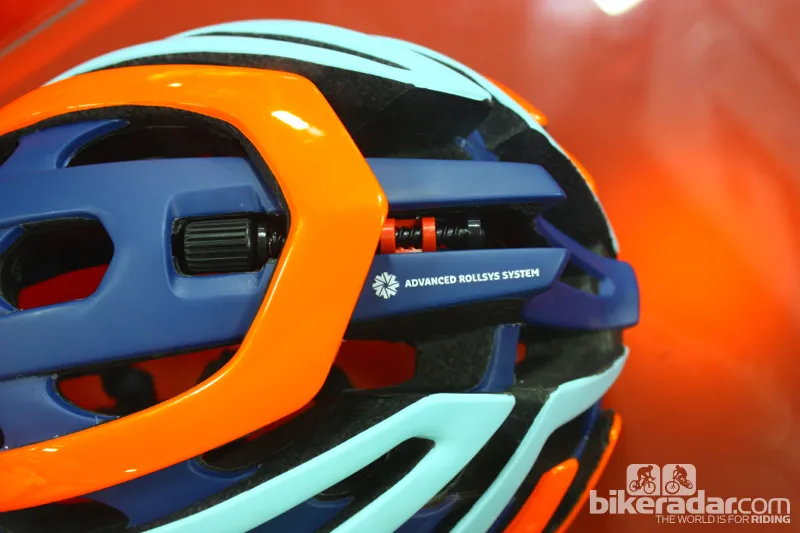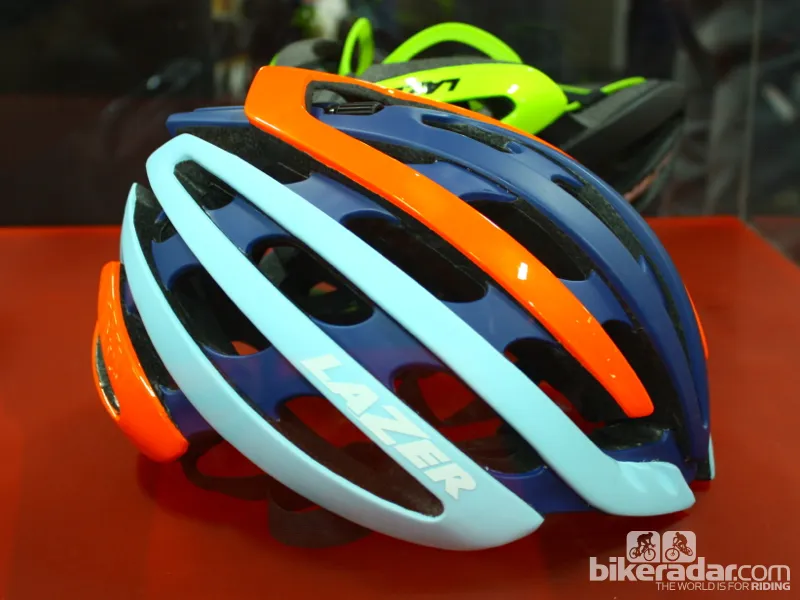For 2014, Lazer Helmets is offering an alternative to the traditional heart-rate chest strap: a heart-rate helmet. The Lazer Genesis with Lifebeam incorporates a small heart-rate sensor at the forehead, which the company says is technology borrowed from that used by fighter pilots.
Lazer also has a Cappuccino combination lock that works with its helmets for use during quick ride stops, plus a few modifications for its existing helmets for 2014.
The Lazer Genesis with Lifebeam can work with either ANT+ or Bluetooth, meaning you can get heart-rate data on either an ANT+ computer like a Garmin Edge or on your smartphone with an app like Strava.
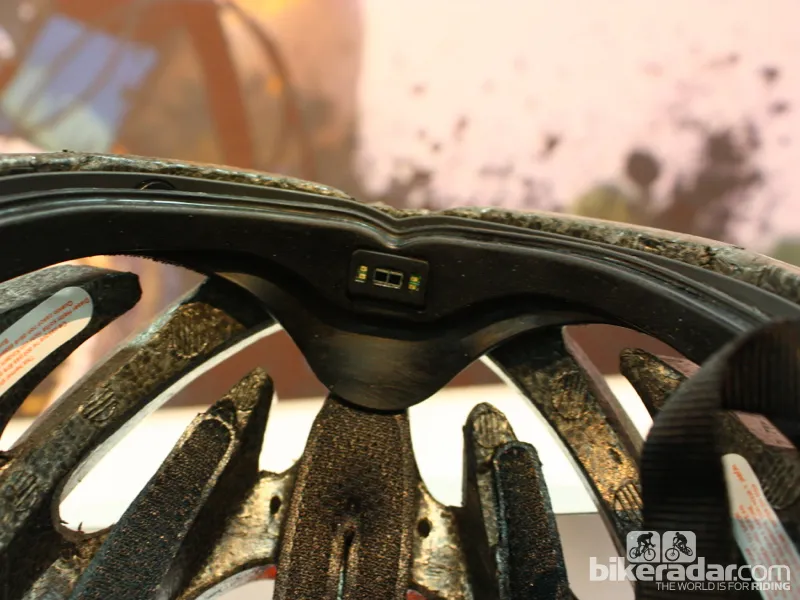
The Genesis with Lifebeam reads heart rate at the forehead
While the product is not yet in production, Lazer estimates the wireless technology will add about 30g to a Genesis, which currently weighs about 310g for a size large.
CAPPUCCINO LOCK
While you probably know roadies who stop for a coffee before, during or after a ride, who many do you know who carry a lock with them? For the quick stop, Lazer designed a little lightweight combination lock that fastens onto the helmet buckle, allowing the helmet straps to be used as a lightweight securing device.
True, a thief could just take a knife to the helmet straps, but this system could thwart the thief who would just take an untethered bike outside a coffee shop and ride away. Retail is $20 (UK pricing TBD).
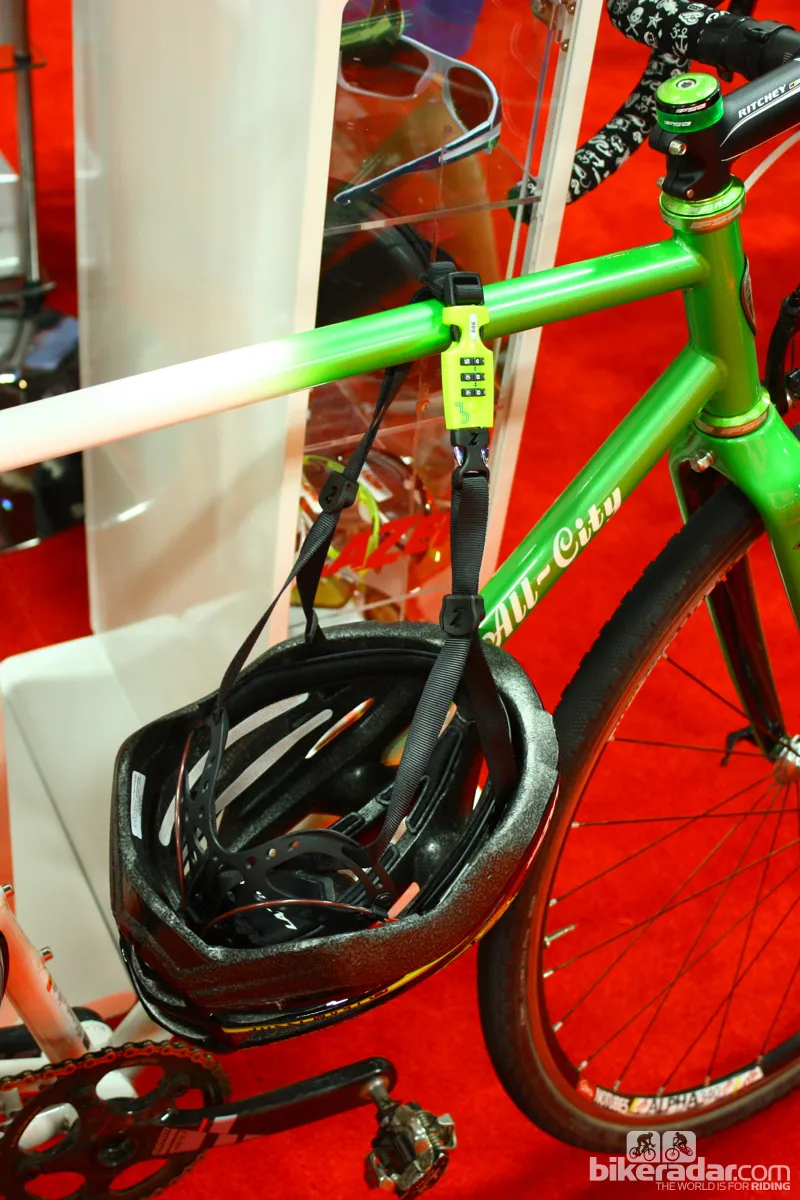
The Cappuccino lock turns a helmet into a theft deterrent
FROM SNAP-ON AERO TO BONDED AERO
Helium Fast shell is now bonded on, resulting in what Lazer claims to be a lighter and more aero helmet than a Helium with a snap-on shell.
“The chrome reflects heat, too. The rear vents draw some air for some ventilation. [Lotto pro Andre] Greipel raced this and won a couple of stages at the Tour Down Under, where it was roasting hot.”
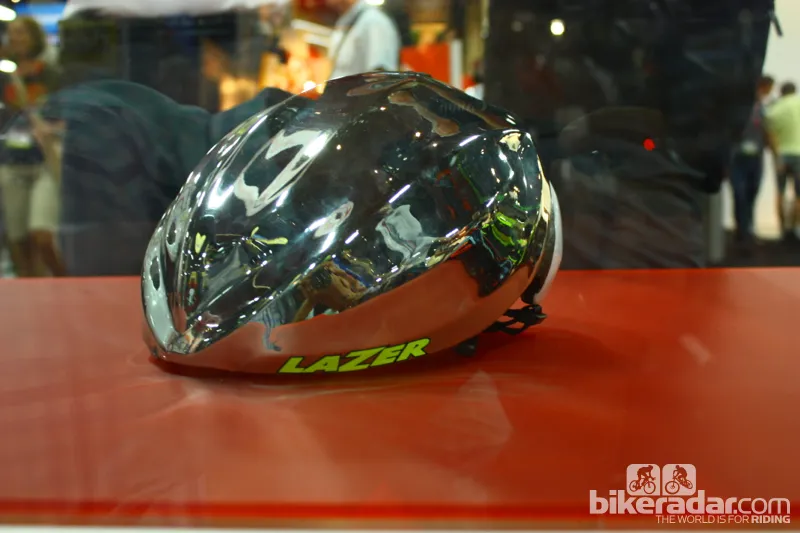
The new Lazer Fast
MIPS
For 2014, Lazer is adding two MIPS (Multidirectional Impact Protection System) adult helmets, adding to the kids MIPS lids in the Belgian company’s line. A few companies work within the MIPS philosophy, which holds that brain trauma can be reduced if the helmet can reduce the rapid deceleration caused by impact.
“Some 70 percent of brain injuries are caused by rapid deceleration,” Smith said. “This basically means when the skull stops and the brain keeps moving, smashing against the inside of the skull.”
How MIPS helmets work by the liner breaking loose and thereby absorbing some of the impact of a crash.
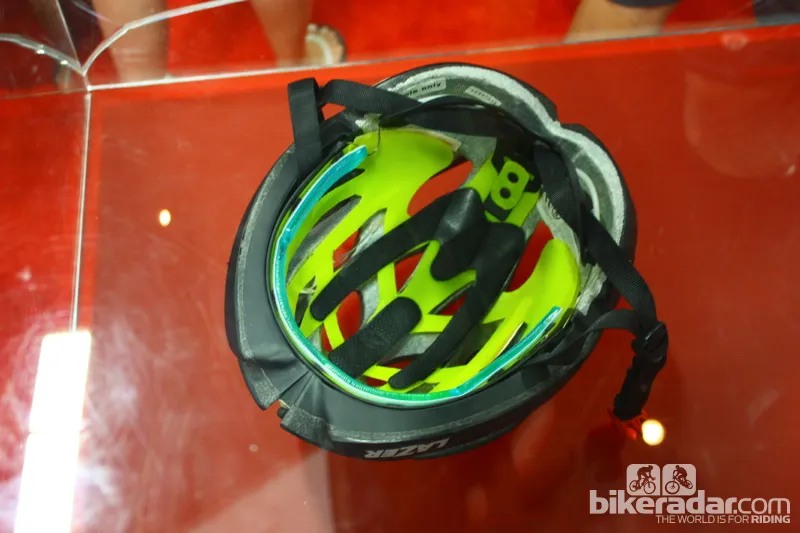
The MIPS liner in this Genesis is designed to separate from the shell in the event of a crash

